“All human invention is the manipulation of nature towards practical uses by humans on this planet. We can exclude nature itself but any human intervention and manipulation, that is what human innovation and engineering is and it should be eligible for a patent.” – Andrei Iancu
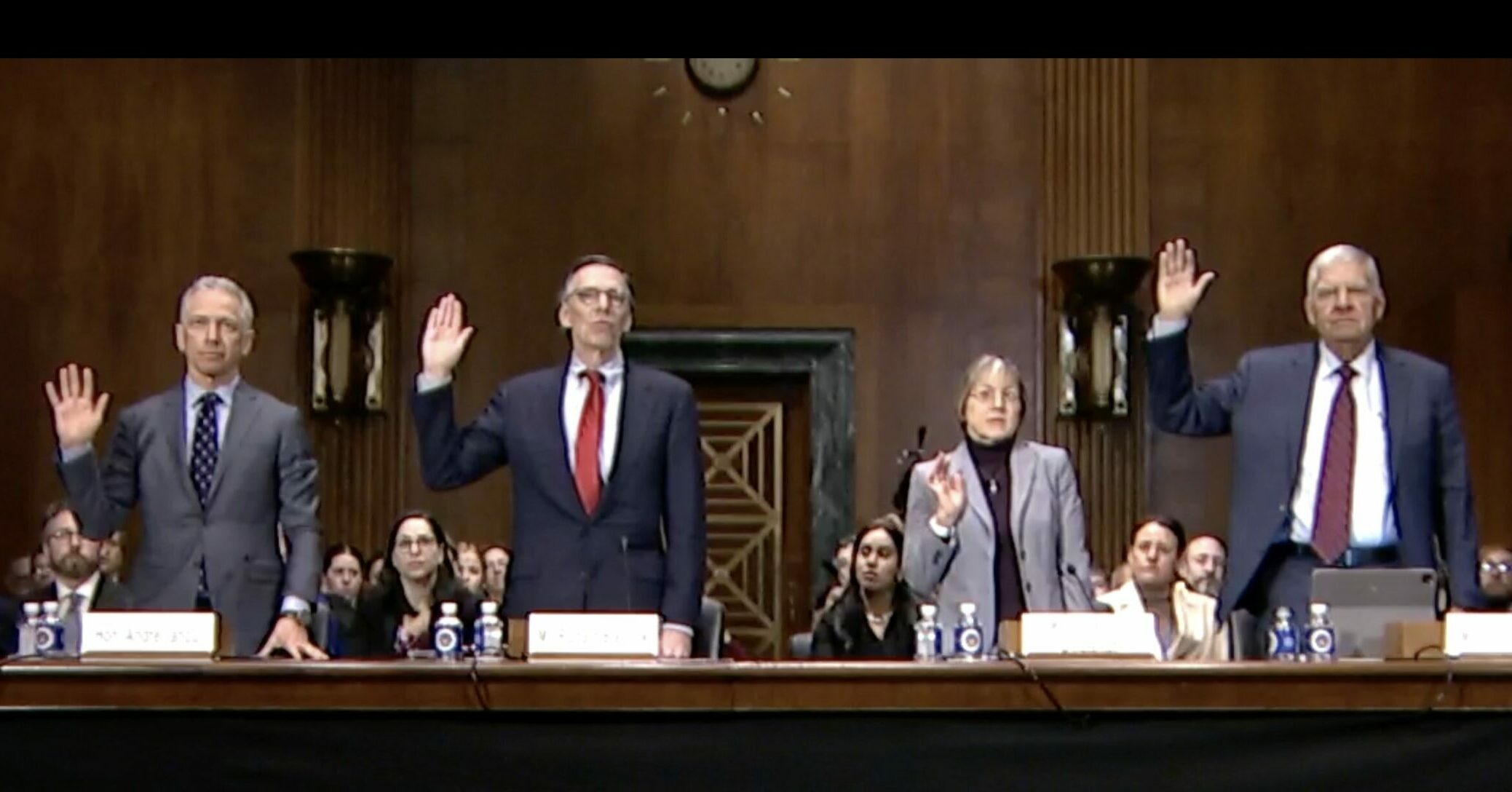
From left: Andrei Iancu, Richard Blaylock, Courtenay Brinckerhoff and Phil Johnson
The Senate Judiciary Committee’s Subcommittee on Intellectual Property today held a hearing featuring eight witnesses who testified about the need to restore certainty to U.S. patent eligibility law. Most, but not all, agreed such a need exists and urged quick passage of the Patent Eligibility Restoration Act of 2023 (PERA).
Senators Chris Coons (D-DE) and Thom Tillis (R-NC) introduced PERA in June of last year. The bill would eliminate all judicially-created exceptions to U.S. patent eligibility law.
Tillis first introduced the bill in August 2022 and Coons announced he would co-sponsor the legislation in September 2022 at a Council for Innovation Promotion (C4IP) event. While the patent community has overwhelmingly championed the bill, independent inventors have expressed concerns that it would ultimately result in the same confusion that currently exists and would make most artificial intelligence inventions ineligible. Many have denounced these views as mischaracterizations. Other stakeholders argue the status quo is working and that changing the law would result in upheaval in certain sectors.
PERA and Isolated Natural Products
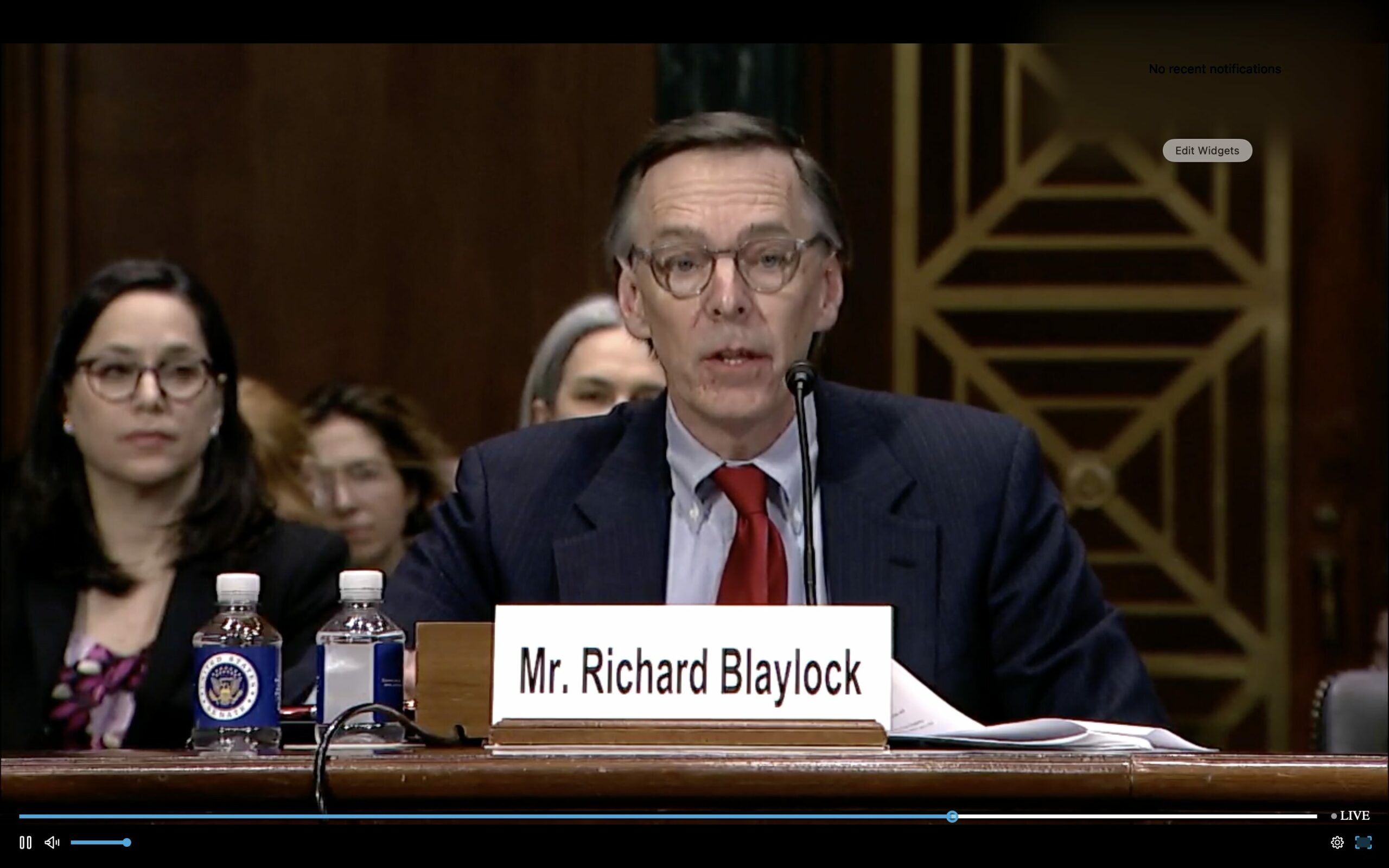 One of those stakeholders was represented today by Richard Blaylock of Pillsbury, Winthrop, Shaw Pittman LLP, who explained that “PERA as introduced would stifle innovation and harm patient care in the fields of diagnostic genetic testing and precision medicine.” Blaylock testified on behalf of Invitae Corporation, a medical genetics company. He said that PERA would “slam the door shut on innovation [in medical diagnostics] and its clinical application in medicine” and that the bill would take us back to the days before the Mayo, Myriad and Alice decisions when clinical testing would require permission from the companies that own the patents.
One of those stakeholders was represented today by Richard Blaylock of Pillsbury, Winthrop, Shaw Pittman LLP, who explained that “PERA as introduced would stifle innovation and harm patient care in the fields of diagnostic genetic testing and precision medicine.” Blaylock testified on behalf of Invitae Corporation, a medical genetics company. He said that PERA would “slam the door shut on innovation [in medical diagnostics] and its clinical application in medicine” and that the bill would take us back to the days before the Mayo, Myriad and Alice decisions when clinical testing would require permission from the companies that own the patents.
Invitae’s solution is to “substantially revise” PERA “to include the requirement that natural phenomena, natural materials and abstract ideas be treated as prior art to all patent applications.” Blaylock said this would effectively codify the essence of current Supreme Court jurisprudence on patent subject matter eligibility. “The patent system should afford the opportunity to own the cure but not the disease,” he added.
Blaylock clashed considerably with the views of the other three witnesses on the first panel of the hearing, who included former U.S. Patent and Trademark Office (USPTO) Director Andrei Iancu; Courtenay Brinckerhoff of Foley & Lardner; and Philip Johnson of the Coalition for 21st Century Patent Reform (21C).
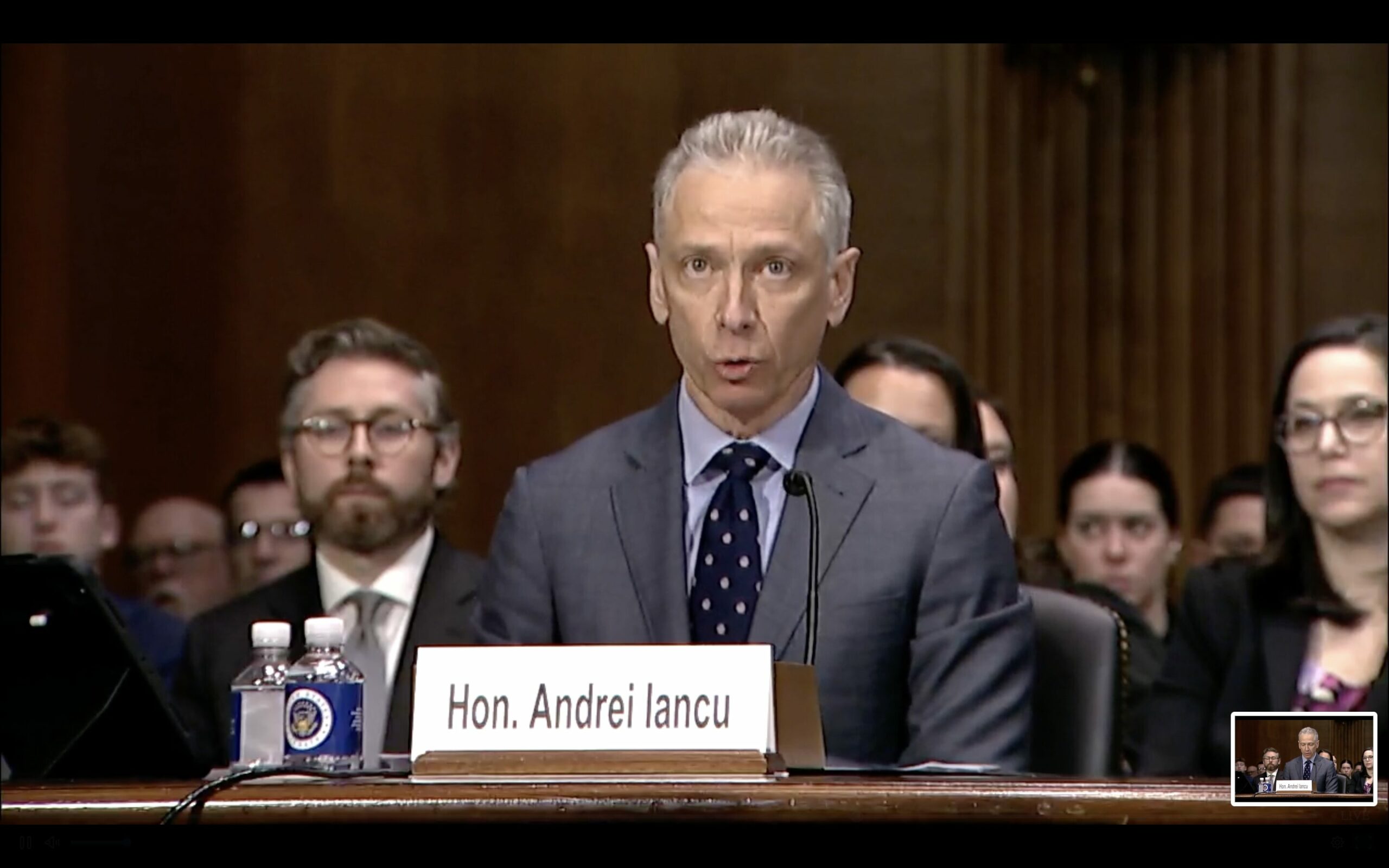 Iancu pushed back strongly on Blaylock’s assertion that new uses of natural phenomena should not be patent eligible, explaining that PERA addresses that a pure, natural product “as such” is not patent eligible, “but as soon as that is applied by a human hand and human ingenuity to a practical application, such as diagnosing in a diagnostic kit a particular disease, that is human innovation and it should be eligible.”
Iancu pushed back strongly on Blaylock’s assertion that new uses of natural phenomena should not be patent eligible, explaining that PERA addresses that a pure, natural product “as such” is not patent eligible, “but as soon as that is applied by a human hand and human ingenuity to a practical application, such as diagnosing in a diagnostic kit a particular disease, that is human innovation and it should be eligible.”
When pressed by IP Subcommittee Chair Chris Coons on why the other areas of patent law—sections 102, 103 and 112—aren’t sufficient filters to avoid the potential harms Blaylock described, Blaylock said there are new biomarkers being discovered everyday, for example, and PERA would permit the privatization of knowledge about such discoveries. Since they are new and non-obvious, it is easy to describe them and how to enable someone to use them. “The rest of the requirements for patentability are important but they don’t address the concern that PERA would change the current environment and [allow for] patenting of knowledge about an association between a particular genetic anomaly and its clinical significance,” Blaylock said. “What would be patentable would be the use of conventional, everyday techniques.”
But Iancu again disagreed, and also said that Blaylock’s suggestion to require that all natural phenomena be treated as prior art to all patent applications would be “basically eliminating the patent system”:
“Mr. Blaylock says it’s bad to give patents if you observe a genetic mutation associated with a particular risk, such as diagnosing cancer of a particular type and then you isolate it and create a diagnostic kit… That is the essence of invention. It takes a lot of time, money and investment to find that out. If we eliminate patents on observing how nature behaves when humans alter it and create new conditions for it, then you eliminate the patent system because that’s what humans do.”
Iancu also said that “all human invention is the manipulation of nature towards practical uses by humans on this planet. We can exclude nature itself but any human intervention and manipulation, that is what human innovation and engineering is and it should be eligible for a patent.”
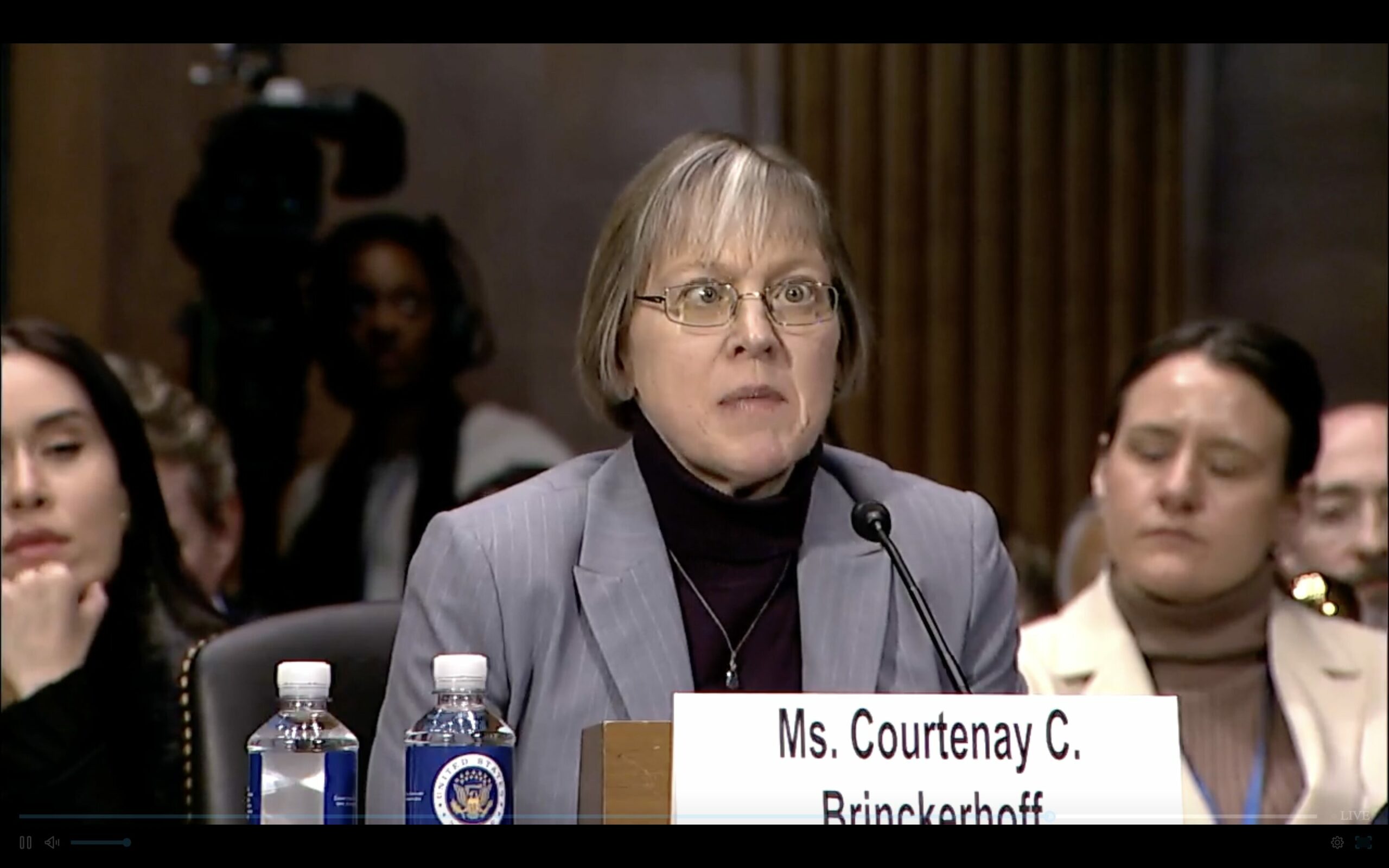 Brinckerhoff told the Subcommittee that current eligibility law is stifling innovation on isolated natural products in other areas, such as vaccine antigens, therapeutic peptides, chemicals isolated from plants and bacteria that are useful in commercial and industrial applications. She said that, since Mayo, Myriad and Alice, isolated natural products cannot be patented here but they can be in Europe, Japan and China. Most countries still grant patents on methods of detecting new diagnostic markers, such as the claims invalidated by the U.S. Court of Appeals for the Federal Circuit’s decision in Sequenom, Brinckerhoff noted. “PERA would bring eligibility back in line with other countries,” she said.
Brinckerhoff told the Subcommittee that current eligibility law is stifling innovation on isolated natural products in other areas, such as vaccine antigens, therapeutic peptides, chemicals isolated from plants and bacteria that are useful in commercial and industrial applications. She said that, since Mayo, Myriad and Alice, isolated natural products cannot be patented here but they can be in Europe, Japan and China. Most countries still grant patents on methods of detecting new diagnostic markers, such as the claims invalidated by the U.S. Court of Appeals for the Federal Circuit’s decision in Sequenom, Brinckerhoff noted. “PERA would bring eligibility back in line with other countries,” she said.
Also commenting on today’s hearings earlier today, Innovation Alliance Executive Director Brian Pomper agreed that PERA is crucial to ensure U.S. competitiveness and urged Congress to enact the bill quickly. Pomper said: “The disparity in patent eligibility between the United States and our foreign competitors is particularly problematic in the critical areas of emerging technologies and biotech innovations, including 5G, advanced computing, artificial intelligence, and medical diagnostics. This not only undermines U.S. competitiveness and the ability of the United States to remain the global leader in innovation, but it harms U.S. national security as other countries challenge U.S. leadership in developing these key technologies.”
PERA is an Eligibility—Not Patentability—Bill
 Phil Johnson of 21C said that certainty is key for 21C’s members and stressed that many opponents of the bill are getting something fundamentally wrong about it. “Just because something is eligible doesn’t mean it’s patentable,” Johnson said. “Yet you’ll see in some of the testimony an equation is reached where they’re treated as the same. This is an eligibility bill. When someone says this is allowing the patenting of X Y or Z, well, not necessarily – not necessarily at all.”
Phil Johnson of 21C said that certainty is key for 21C’s members and stressed that many opponents of the bill are getting something fundamentally wrong about it. “Just because something is eligible doesn’t mean it’s patentable,” Johnson said. “Yet you’ll see in some of the testimony an equation is reached where they’re treated as the same. This is an eligibility bill. When someone says this is allowing the patenting of X Y or Z, well, not necessarily – not necessarily at all.”
In another exchange prompted by Senator Mazie Hirono (D-HI), Hirono, Brinckerhoff provided some examples of natural materials that might be eligible under PERA but aren’t under the current law, such as a chemical from a plant that could have use as a therapeutic agent or bacteria that may be found in certain areas of the world with specific useful properties. Blaylock said these examples should not be patent eligible because, like in the example of observing a particular genetic mutation associated with disease risk and then isolating it, “the only thing that is new is that knowledge. Isolation, purification and enrichment are ordinary aspects of conventional genetic sequencing technology.”
However, Brinckerhoff said Blaylock “underestimates the inventive contribution of figuring out that there is a new gene with a new purpose, a new function, that hasn’t been discovered or known before.”
Johnson, and later in the hearing Coons, referenced the intensive hearings conducted by the Subcommittee on patent eligibility in 2019, where Coons said “40 of the 45 witnesses said it was a mess.” Johnson said that, despite Blaylock’s contention that the sky hasn’t fallen in the last decade since the Supreme Court’s decisions on eligibility, the danger is ultimately in what might not be discovered because of the disincentive to do so:
“What we’re worried about and what [Blaylock] has already acknowledged is there are some very important things lurking in the genome that could be incredibly important for our well-being in the future. And we should want to incentivize people to look for it and to spend the time and energy and money that is needed in order to find it. These things don’t announce themselves. This takes real hard work and insights, and real invention, and we should recognize that, and if otherwise deserving, they should be patented.”
Blaylock also said a research or experimental use exemption in the bill would not be sufficient because “Invitae would still be concerned that PERA would enable the privatization of information.”
HTIA: Present Eligibility Law is Predictable
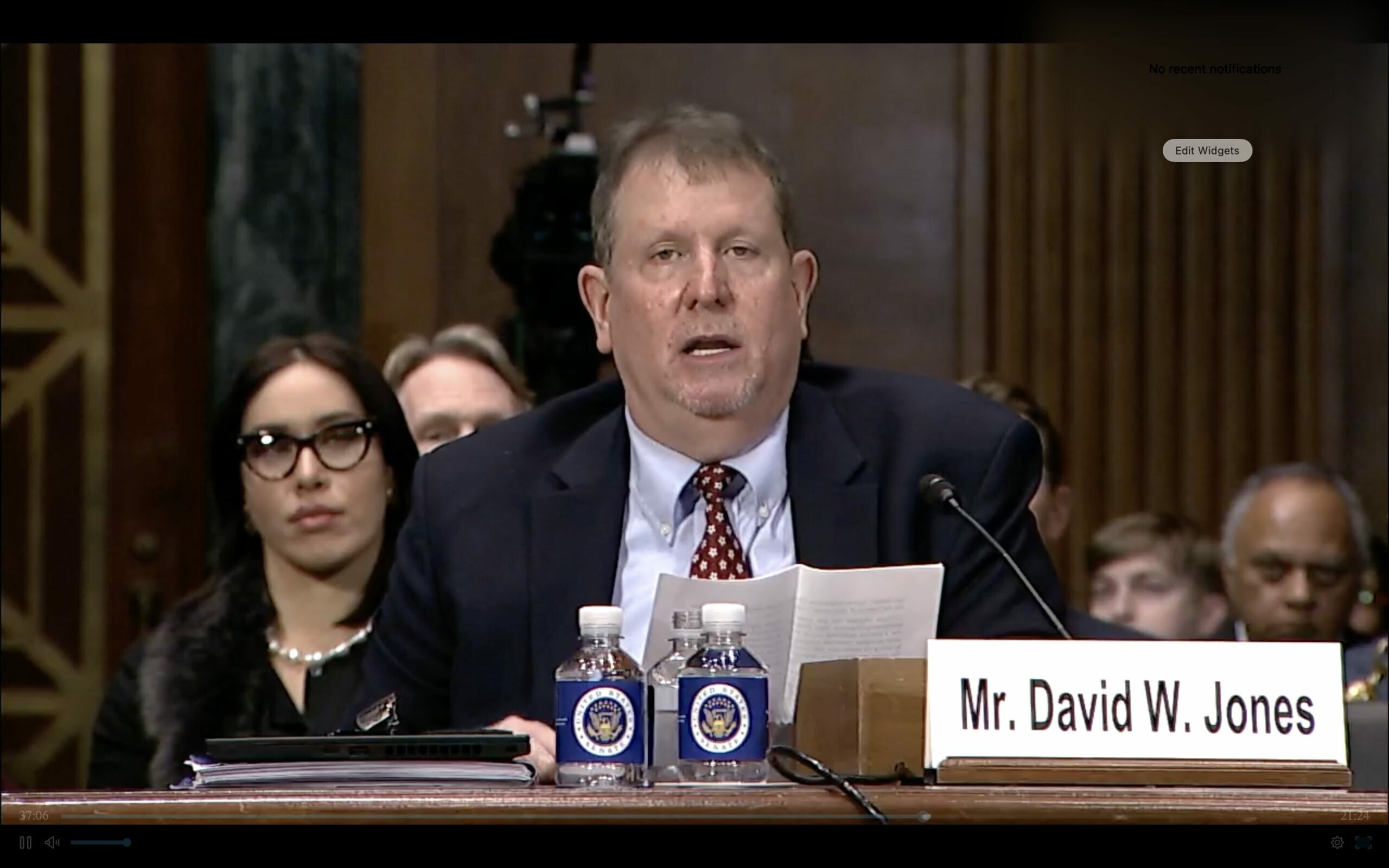 During the second panel, three of the witnesses—Professor Adam Mossoff of the Antonin Scalia Law School, George Mason University; Mark Deem of Lightstone Ventures; and former USPTO Director David Kappos—urged the Subcommittee to pass PERA swiftly, while David Jones of the High-Tech Inventors Alliance (HTIA) said there are too many concerns with the language and too many questions around whether legislative changes are necessary to warrant passage.
During the second panel, three of the witnesses—Professor Adam Mossoff of the Antonin Scalia Law School, George Mason University; Mark Deem of Lightstone Ventures; and former USPTO Director David Kappos—urged the Subcommittee to pass PERA swiftly, while David Jones of the High-Tech Inventors Alliance (HTIA) said there are too many concerns with the language and too many questions around whether legislative changes are necessary to warrant passage.
Jones cited statistics that he claims show Section 101 law is more predictable than other areas of patent law based on USPTO and court decisions, and said that HTIA is concerned PERA would make almost any human activity patent eligible. He suggested a more targeted approach that would involve identifying particular problem areas and creating sui generis protection or adopting a standard that’s “explicitly tethered to an advance in technology.”
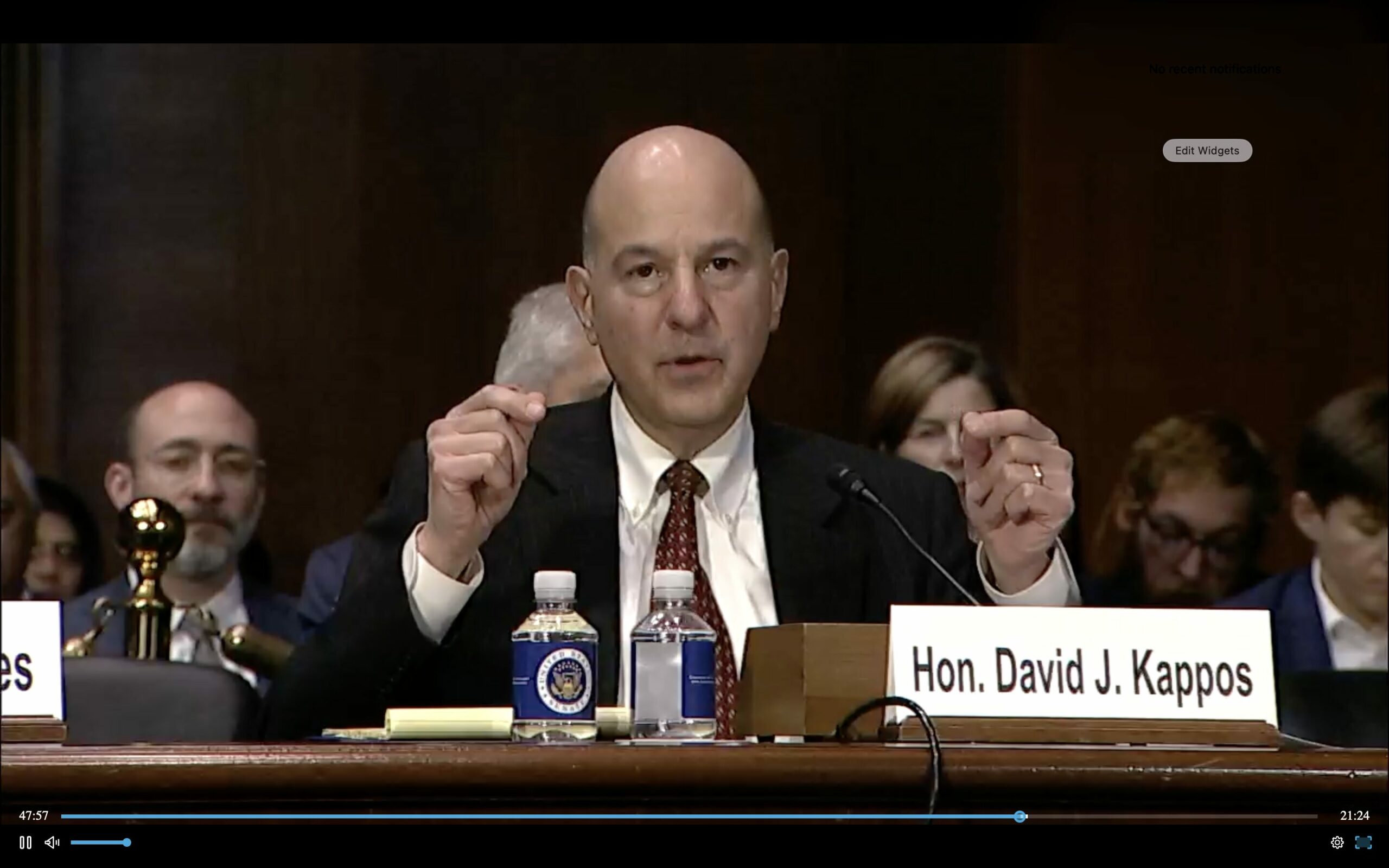 Jones also alluded to the oft-cited examples of wedding ceremonies and football plays being potentially patent eligible under PERA, which Coons asked Kappos to address. Kappos said such things would of course not be eligible and that reducing the conversation to such examples does a disservice to the serious business of patent law. “It’s terrible policy to guide our patent laws by reducing our discussion to trivial, silly examples,” Kappos said.
Jones also alluded to the oft-cited examples of wedding ceremonies and football plays being potentially patent eligible under PERA, which Coons asked Kappos to address. Kappos said such things would of course not be eligible and that reducing the conversation to such examples does a disservice to the serious business of patent law. “It’s terrible policy to guide our patent laws by reducing our discussion to trivial, silly examples,” Kappos said.
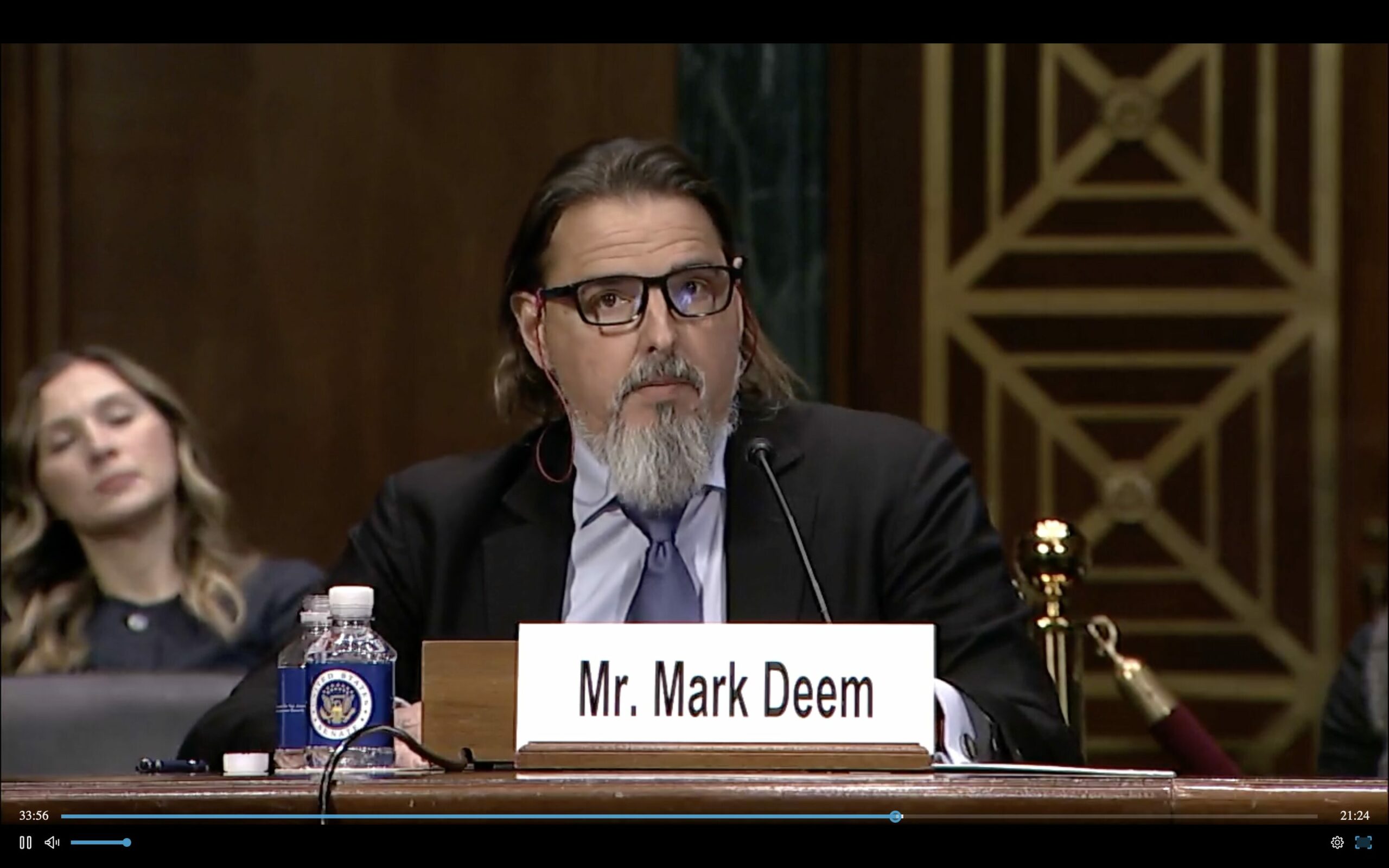 As a venture capitalist, Deem said “the United States is failing many of our most innovative startups.” Deem explained that when he is deciding what to invest in, “we have to weigh out the totality of the risks and uncertainties. With 101 as an additional area of uncertainty in exciting technology areas, we just won’t go into them.”
As a venture capitalist, Deem said “the United States is failing many of our most innovative startups.” Deem explained that when he is deciding what to invest in, “we have to weigh out the totality of the risks and uncertainties. With 101 as an additional area of uncertainty in exciting technology areas, we just won’t go into them.”
Jones conceded to Deem that the statistics bear out that “patents are really, really hard to get and negatively affecting R&D investments” in areas like diagnostics.
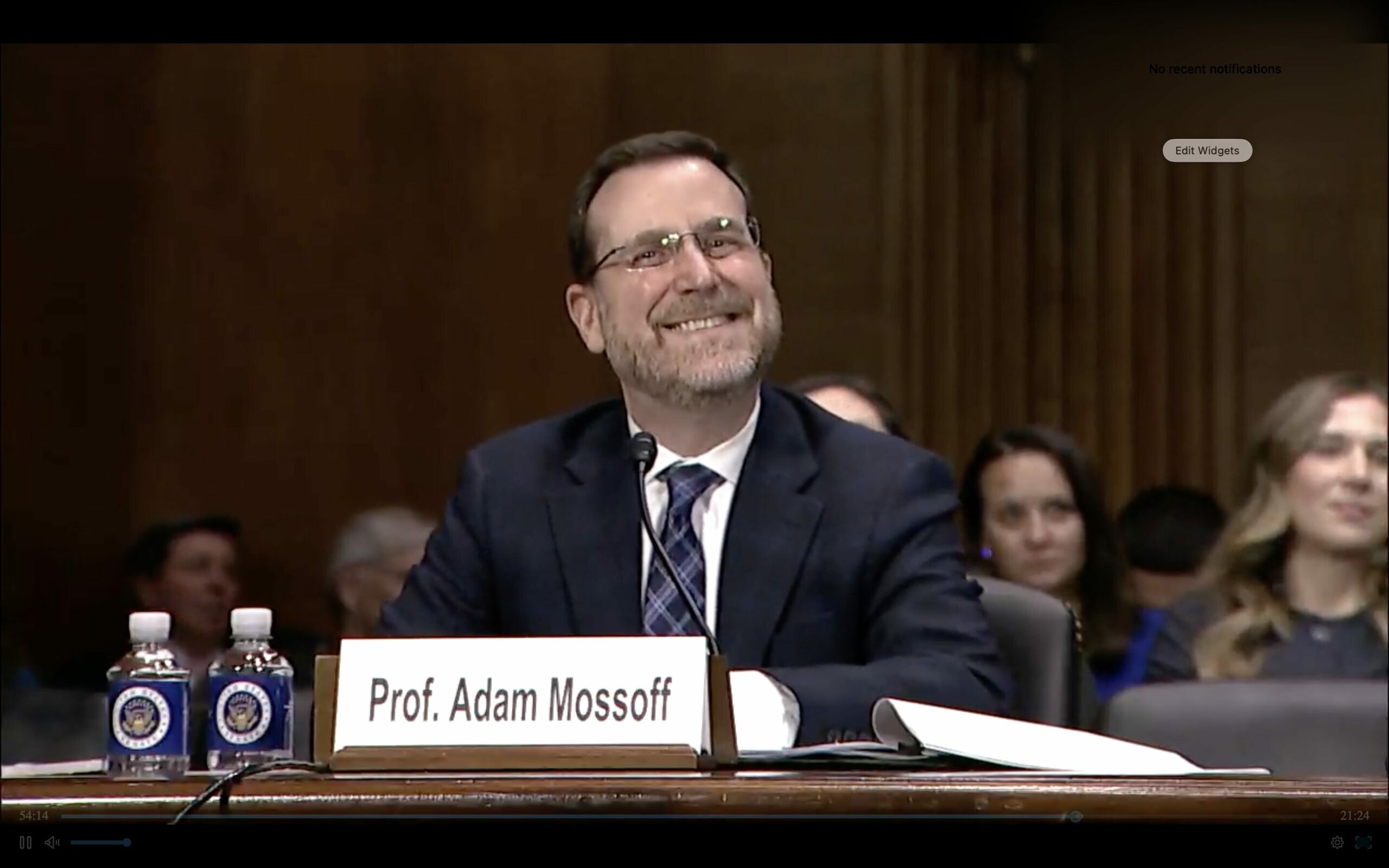 In response to a question from Coons about data cited in his written testimony, Mossoff explained that 1,694 patent applications of a sample of 17,000+ identified between 2014 and 2019 that faced an initial or final rejection on 101/ Alice–Mayo and then were abandoned by the applicant were on technologies (many of which were healthcare discoveries, cancer treatments, diabetes, diagnostics, other life-saving inventions) that were granted patents on the same inventions in China and the EU. “This is a clear signal to entrepreneurs that the United States is closing its doors to cutting-edge innovations,” Mossoff said.
In response to a question from Coons about data cited in his written testimony, Mossoff explained that 1,694 patent applications of a sample of 17,000+ identified between 2014 and 2019 that faced an initial or final rejection on 101/ Alice–Mayo and then were abandoned by the applicant were on technologies (many of which were healthcare discoveries, cancer treatments, diabetes, diagnostics, other life-saving inventions) that were granted patents on the same inventions in China and the EU. “This is a clear signal to entrepreneurs that the United States is closing its doors to cutting-edge innovations,” Mossoff said.
Tillis remarked that he worries about not knowing what innovation we’re missing and the impact on younger entrepreneurs just starting out. In response, Kappos noted that “the IP system has never been about what’s now but what’s next. Ultimately, the innovation that’s not created because the patent system isn’t there to incent it is the innovation whose price is infinite.”

![[IPWatchdog Logo]](https://ipwatchdog.com/wp-content/themes/IPWatchdog%20-%202023/assets/images/temp/logo-small@2x.png)

![[Advertisement]](https://ipwatchdog.com/wp-content/uploads/2024/04/UnitedLex-May-2-2024-sidebar-700x500-1.jpg)
![[Advertisement]](https://ipwatchdog.com/wp-content/uploads/2024/04/Artificial-Intelligence-2024-REPLAY-sidebar-700x500-corrected.jpg)
![[Advertisement]](https://ipwatchdog.com/wp-content/uploads/2024/04/Patent-Litigation-Masters-2024-sidebar-700x500-1.jpg)

![[Advertisement]](https://ipwatchdog.com/wp-content/uploads/2021/12/WEBINAR-336-x-280-px.png)
![[Advertisement]](https://ipwatchdog.com/wp-content/uploads/2021/12/2021-Patent-Practice-on-Demand-recorded-Feb-2021-336-x-280.jpg)
![[Advertisement]](https://ipwatchdog.com/wp-content/uploads/2021/12/Ad-4-The-Invent-Patent-System™.png)






Join the Discussion
7 comments so far.
Anon
January 25, 2024 09:06 amSimple and straightforward lesson for our Legislative critters:
Not all stakeholders want the same thing – not all stakeholders are interested in actual strong patent rights.
You are going to have to do your job and DECIDE to have strong patent rights.
That directly means that you must not include ANY Trojan Horses.
Disruptive innovation will mean that some Stakeholders WILL SUFFER.
You may not “get” to “hear” certain Voice$$$ as much as you may have grown accustomed to.
But the actual path forward is exceedingly clear.
concerned
January 25, 2024 04:44 amBobM:
The answer to what is patentable is easy and obvious.
Any idea common people think is wonderful and has NOT been in front of the courts. For example, a shoebox with a generic computer attached somehow magically cures cancer. Common folks would be thrilled of the results and standing in line to be treated next.
The courts would yawn and say: Just the abstract idea of curing a disease. On appeal, the rejection reason changes to the cure is just interpreting data.
SCOTUS would refuse to hear the case, mainly because a majority of them are standing in line for their own treatment, on their own time of course.
Amazing how many products judges probably have in their home which would be declared an abstract idea. The products are just figments of their mind. Brilliant.
Julie Burke
January 24, 2024 02:49 pmThe USPTO’s Office of Patent Quality Assurance stats for fiscal Year 2022 indicate that examiners also struggle to apply the subject matter eligibility (SME) criteria.
10.6% of the SME rejections made under 35 USC 101 fail to comply were found by OPQA to be improper.
Of those, in 50% of the time the examiners do not provide sufficient evidence why the invention is directed to a judicial exception – this is Step 2A, prong one of the analysis.
50% of the improper rejection also failed to include sufficient evidence that the claimed invention does not integrate the recited judicial exception into a practical application, This is Step 2A, Prong two.
21.4% of the improper rejections fail to set forth sufficient evidence as to why the claimed invention does not provide an inventive concept. This is Step 2B.
In 15.4 % of the improper rejections, the invention is incorrectly characterized as a mathematical concept.
In 73.1 % of the improper rejections, the invention is incorrectly characterized as a mental process.
Congress, help fix this mess!
BobM
January 24, 2024 12:57 pmAs someone who has been patenting computer-implemented inventions for a while, I have no longer have any idea what is patentable under 35 USC 101. Camera? Not patentable. Garage door opener? Not patentable. Video transcoding? Not patentable. System for determining a power transmission system should be modified? Not patentable. Mathematical technique for aligning lips with audio? Patentable.
concerned
January 24, 2024 11:27 amCourt rulings are not necessarily the rules, but become the rules. Just ask someone who kept getting different rulings as their case proceeded.
Therefore, whether this proposal is good or bad does not matter. The courts will just substitute their opinion as law.
Anon
January 24, 2024 10:50 amHTIA = ZERO credibility.
Pro Say
January 23, 2024 09:48 pm“You know how you can tell we’re lying? Yes, that’s right. Our lips are moving.”
Blaylock & Jones, aka “The Bobbsey Twins of B.S.”